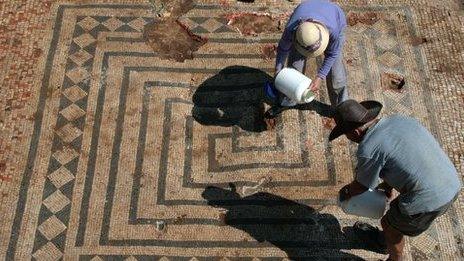Bournemouth University dig finds 'significant' Roman remains
- Published
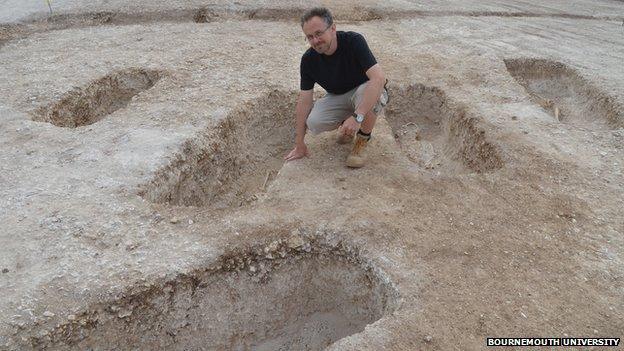
The five skeletons were found within an enclosure about 100m (110 yds) from the villa
The discovery of five skeletons near the site of a Roman villa in Dorset has been described as "unique" and "significant" by archaeologists.
The two men and three women are thought to have been the owners and occupants of the villa in the mid 4th Century.
Miles Russell, of Bournemouth University, said: "It is the only time where a villa and occupants have been found in the same location in Britain."
The humans are thought to be three generations of the same family.
The remains were found about 100m (110 yds) from the villa, which was excavated last summer, near the village of Winterborne Kingston.
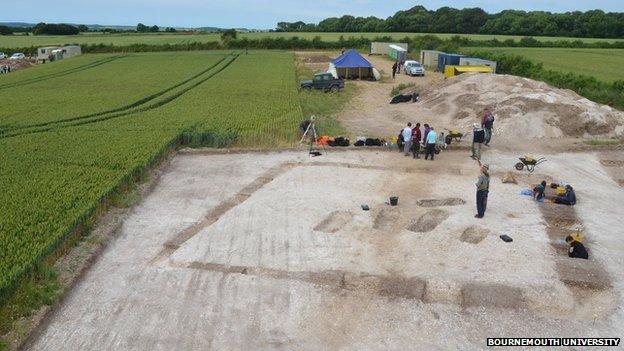
The graves appeared to have once been surrounded by a palisade-like structure - like a "family tomb"
Mr Russell said that the find was unique, because "no-one has ever explored beyond the big house".
"It would be extremely odd [if these were not the occupants] given the closeness of the graves to the villa, the fact they are high status burials in an enclosure and there is grave goods with them," he said.
"You wouldn't just bury anyone in your own garden.
"This [find] could provide us with significant information, never retrieved before, about the state of health of the villa owners, their ancestry and where they came from.
"One of the big questions is whether the villas in the South West were owned by Britons who have become Roman or owned by people from another part of the empire who have come to exploit an under-developed rural area.
"All villas in this region are late-Roman, and our findings should tell us more about what life was like in this period of history."
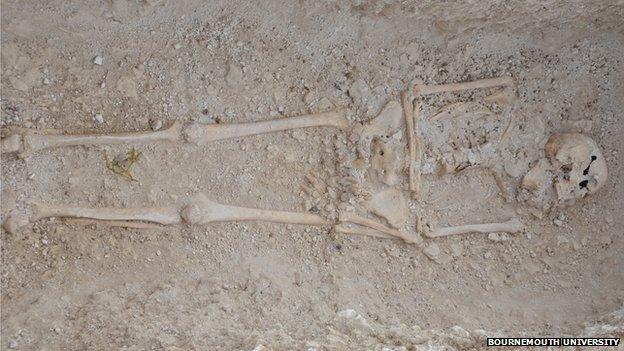
The five individuals lived in the mid-4th Century and were given "high status burials"
The graves appeared to have once been surrounded by a palisade-like structure, which Mr Miles compared to a "family tomb".
Paul Cheetham, senior lecturer in archaeological sciences and project co-director, said: "We are looking at the rural elite of late-Roman Britain, living through the economic collapse that took place during this period.
"These remains will shed light on the final stages of the golden age of Roman Britain."
- Published19 June 2014

- Published1 May 2014
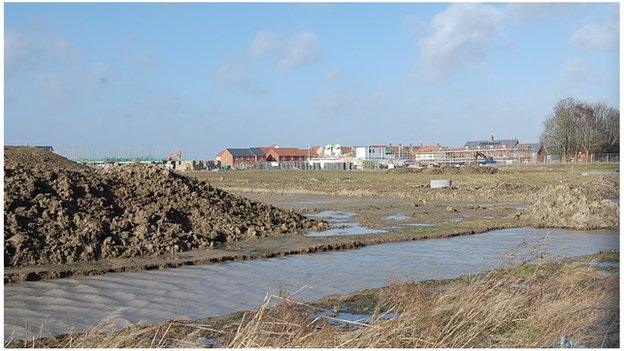
- Published3 May 2014
